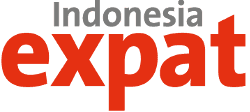The World Bank sets the poverty line for lower-middle-income countries at US$4.20 per person per day, based on the 2021 purchasing power parity (PPP) standard.
This benchmark is used to assess individual poverty levels across countries.
In its June 2025 Update to the Poverty and Inequality Platform, the World Bank officially adopted the 2021 PPP calculation, replacing the previously used 2017 standard. As context, PPP compares the cost of purchasing the same goods and services across countries, allowing for more accurate international poverty comparisons.
With this update, the World Bank revised several poverty lines:
The international extreme poverty line rose to US$3.00 per person per day (up from US$2.15 under the 2017 PPP),
The line for lower-middle-income countries increased to US$4.20 (from US$3.65),
And for upper-middle-income countries, it rose to US$8.30 per person per day (from US$6.85).
Indonesia was classified by the World Bank as an upper-middle-income country in 2023, after reaching a gross national income (GNI) of US$4,580 per capita (the national average income per person per year). Countries in this category have a GNI per capita between US$4,466 and US$13,845.
Using the 2021 PPP standard and applying the US$8.30 per person per day threshold, the World Bank estimates that 68.2% of Indonesia’s population lived below the upper-middle-income poverty line in 2024. Based on the 2024 National Socio-Economic Survey by Indonesia’s Central Statistics Agency (BPS), the country’s population stands at 285.1 million—meaning approximately 194.4 million Indonesians fall below this threshold. In other words, two out of every three Indonesians could be considered poor by global upper-middle-income standards.
In contrast, Indonesia’s national poverty rate is calculated differently. The Central Statistics Agency (BPS) uses the Cost of Basic Needs (CBN) approach, which defines poverty based on the minimum expenditure needed to meet essential food and non-food needs.
“The minimum amount of Rupiah needed to meet these basic needs is stated in the poverty line,” explained Amalia Adininggar Widyasanti, Head of BPS, in a written statement from May. “The poverty line is calculated based on the minimum expenditure to meet basic food and non-food needs.”




